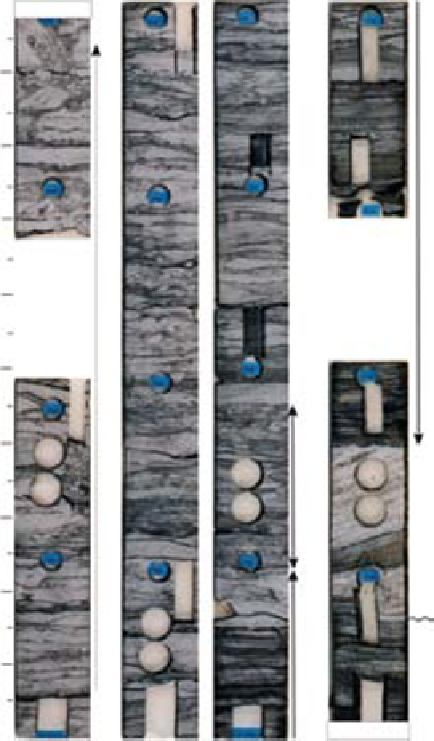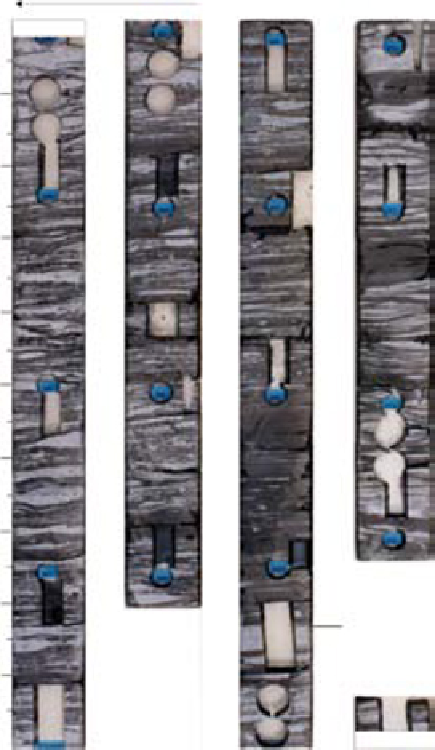Geoscience Reference
In-Depth Information
100
sanding-upward
Top
100
Top
90
90
80
80
70
70
60
60
50
50
40
40
30
30
20
20
10
10
Base
0 cm
Base
0 cm
Fig. 12.
Facies association FA3: Heterolithic distributary-
mouth-bar, punctuated by terminal distributary-channel
deposits. Mixed sandstone/mudstone heterolithic deposits
showing bimodal sand grain sizes alternating with moder-
ate to intensely bioturbated heterolithics, suggesting river
discharge seasonality. Medium-grained cross-bedded
sandstone interpreted as terminal distributary channels
commonly punctuate the heterolithic mouth-bar deposits.
Example taken from reservoir zone Tilje 3.1 (T3.1).
Fig. 13.
Facies association FA4: Proximal-medial tidally
influenced delta-front deposits showing coarsening-
upward and sanding-upward successions. Mudstone-
dominated heterolithics change gradationally upward
into mixed sandstone/mudstone and sandstone-
dominated heterolithics showing ripple cross-laminated
sandstone with local bipolar palaeocurrent directions.
Thick homogeneous mudstone layers are interpreted
as fluid-mud deposits generated during times of high
river discharge. Example taken from reservoir zone
Tilje 3.1 (T3.1).
dominated heterolithics showing low intensities of
bioturbation indicate the presence of brackish-water
conditions. Similarly to FA4, fluid-mud layers pre-
served in these deposits suggest the formation of
substrates that inhibited infaunal colonisation and
the suppression of suspension feeders from the
Skolithos
ichnofacies. The overall mudstone-
dominated facies and very-fine grained, sanding
upward vertical succession, coupled with the
impoverished
Cruziana
trace-fossil assemblage,
suggest that FA5 was deposited in a low-energy
prodeltaic setting.
and F5.5). These mud-dominated facies showing
internal lamination and low to moderate burrowing
(dominated by
Cruziana
Ichnofacies deposit feed-
ers) suggest slow rates of sedimentation, largely from
suspension. The very-fine grained sand lenses (F5.4
and F5.5) become thicker upward (up to 3 cm). The
sand was mostly introduced by low-energy currents
during storms (wave-dominated heterolithics) and
flood events (current-dominated heterolithics).
Mudstone layers associated to flood events are
poorly laminated to homogeneous (fluid-mud
deposits) and generally unbioturbated. The current-


Search WWH ::

Custom Search